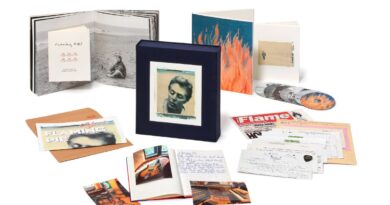
When Mono Records Were Still a Thing
Everything that gets released today is, at a minimum, produced in stereo: two distinct channels (left and right) with the instrumentation and vocals mixed and balanced in such a way that our brains perceive the music coming from the two speakers (or headphones) in a three-dimensional way. If you have the right gear and want to spend extra, there are plenty of performances recorded in 5.1, too.
But back in the early days of rock, almost everything was recorded in mono: one unified channel with no distinct left and right sounds. This, after all, was the way music had always been recorded. Stereo technology wasn’t introduced to vinyl until 1958. It took almost another dozen years for the idea of stereo, the home audio equipment needed to play it, and the spread of stereo FM broadcasts to become widespread enough for the record labels to dump mono entirely.
But for most of the 60s, many releases came in both stereo and mono versions–the former for the early adopters in the hi-fi boom and the latter for the millions of people for whom cheap portable record players were enough. Besides, since FM stereo was still in its infancy, most of the rock and records being produced were only going to be heard through a mono AM radio.
It’s fascinating to go back and listen to some of these original mono recordings. Purists swear by the Beatles’ mono output, which more-or-less ended with the release of Sgt. Pepper. Although there’s a mono mix for The White Album, it’s agreed that for the first time, a Beatles album designated the stereo version to be the primary version of the record.
A mono mix can sound vastly different than the now more familiar stereo version, which can offer a fascinating new perspective on the music. (Go here for an example of what I’m talking about.)
Then there were the so-called Duophonic releases, a form of fake stereo. Recordings made and mixed in mono were then remixed–“rechannelled”–into a faux stereo version. This was a way of cheaply converting old-fashioned mono recordings into new-fangled stereo versions. Many artists suffered through these releases–almost all are long-gone, by the way–but going the Duophonic route was very, very popular for a while in the middle 60s.
If you’ve never experienced a true mono mix on a good home audio system, my suggestion is that you pick up your favourite Beatles album in its mono version. You may end up discovering these old familiar songs in a brand new way.



I sort of clued in when I was discovering the Beatles because the stereo version of Taxman on Revolver is practically unlistenable, especially with headphones. The hard pan of the guitar is so uncomfortable.
I already have Rubber Soul onwards in stereo but I’ve been slowly buying the first 5 albums in mono. It’s definitely a different listening experience.
I love the scene in the Lemmy documentary where he goes to Amoeba and he’s looking for the mono version of the CD box set and then the manager sells him her copy because, well, he’s frickin Lemmy!